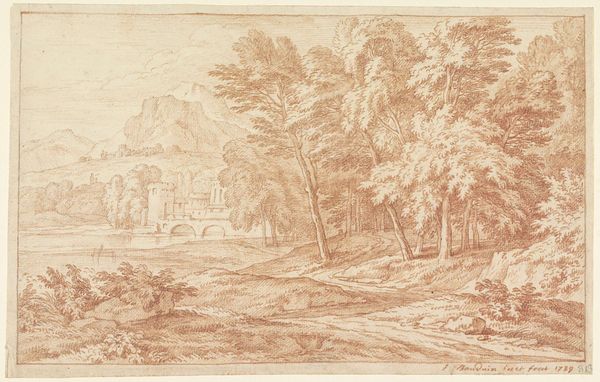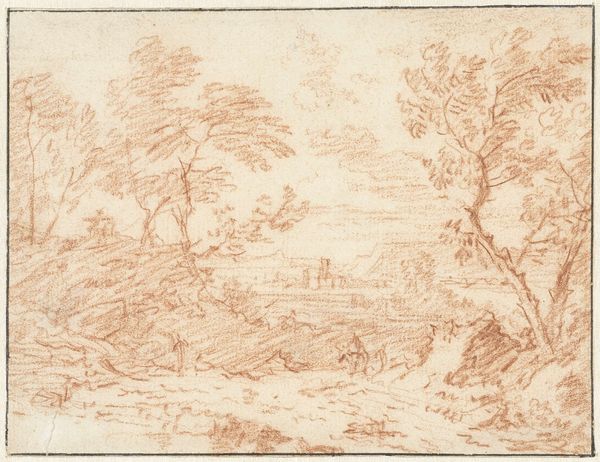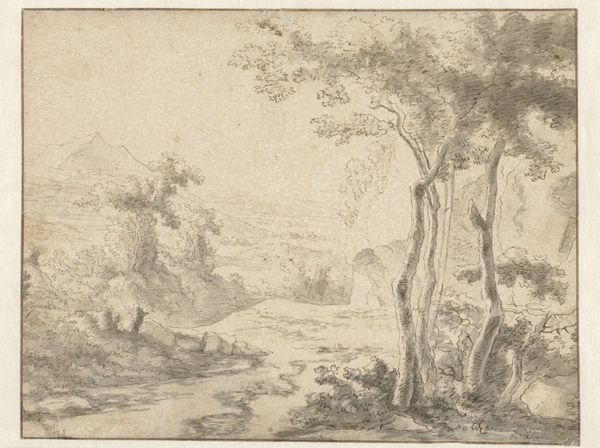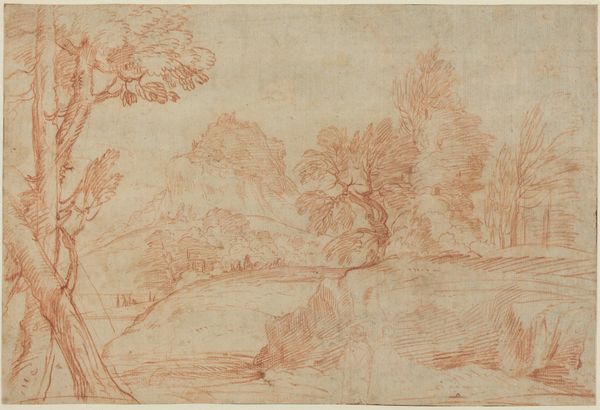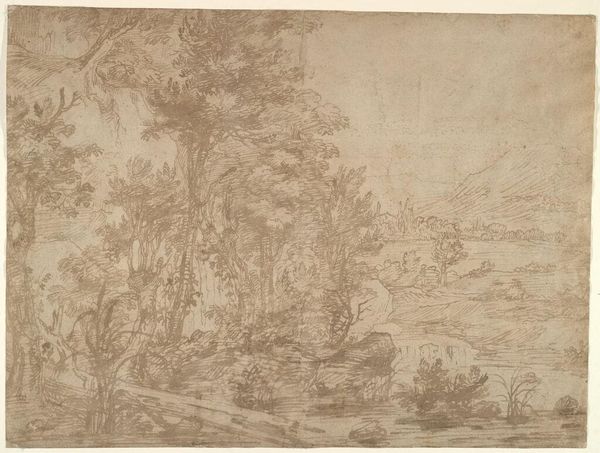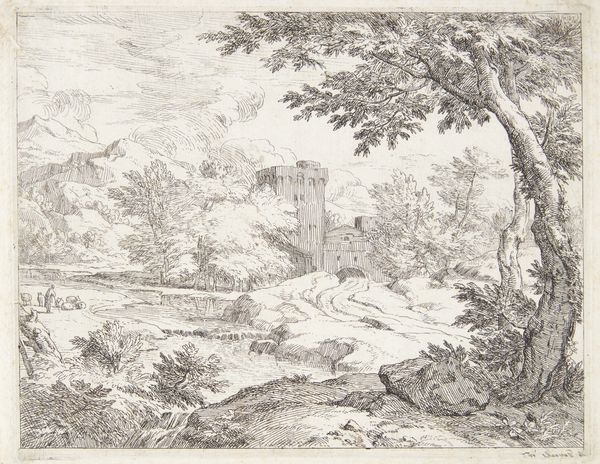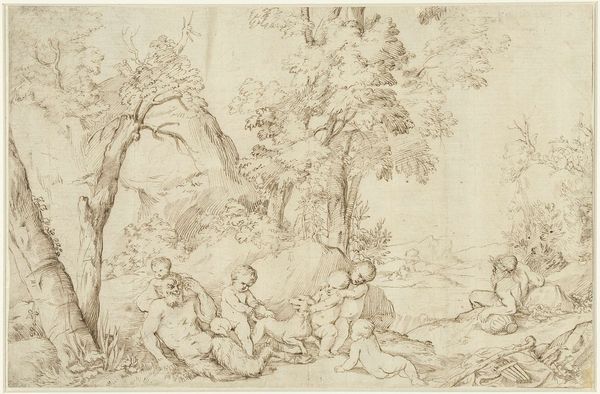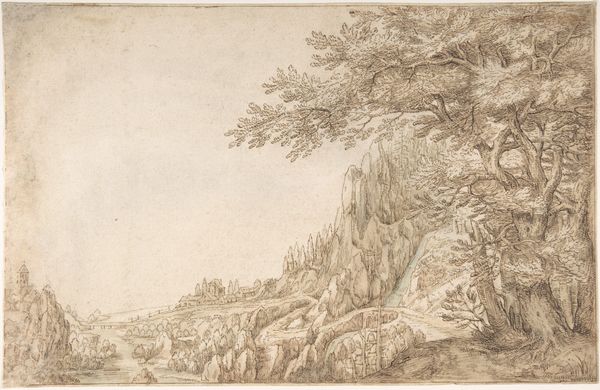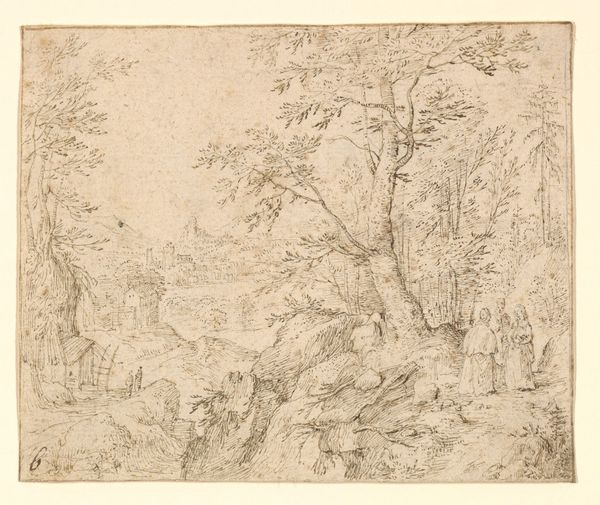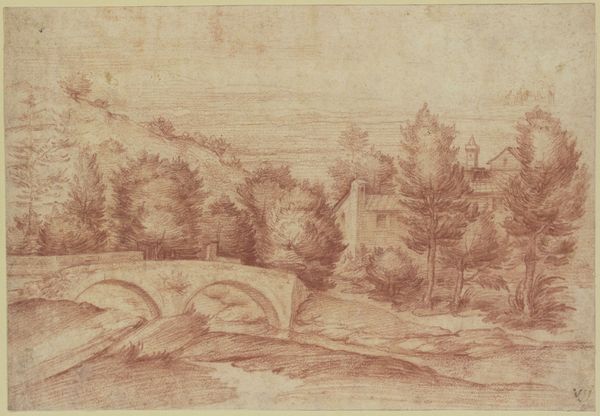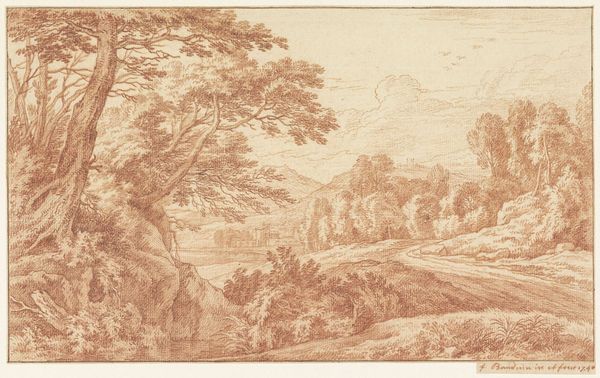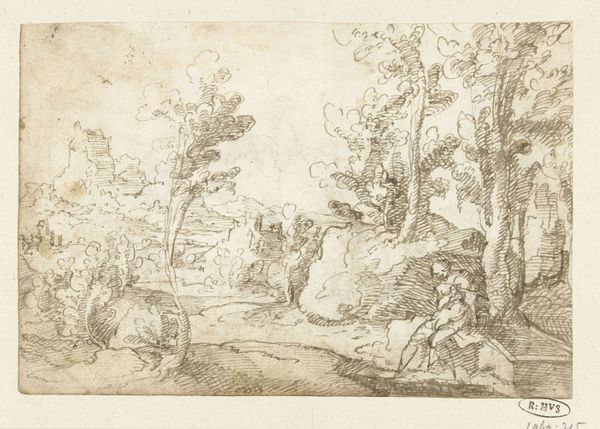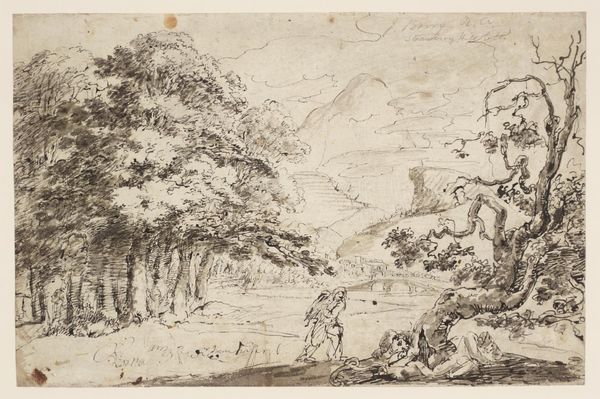
drawing, tempera, etching
#
landscape illustration sketch
#
drawing
#
light pencil work
#
baroque
#
tempera
#
pen sketch
#
etching
#
pencil sketch
#
landscape
#
classical-realism
#
etching
#
ink drawing experimentation
#
pen-ink sketch
#
botanical drawing
#
pen work
#
botanical art
Dimensions: height 295 mm, width 380 mm
Copyright: Rijks Museum: Open Domain
Editor: Here we have Frans Boudewijns' "Italian Landscape with a Tree by a Rock," created sometime between 1700 and 1766, employing etching and tempera. I am struck by the almost dreamlike quality evoked by the delicate lines, but it also feels carefully constructed. How do you see this piece, particularly regarding its techniques? Curator: It is intriguing to examine the means of production here. The etching process itself, the way Boudewijns uses the resist and acid to create those delicate lines you mentioned – it’s a form of industrialization, right? And tempera too, a pigment-based process of adding colour and texture – that brings labour into the work in very specific and skilled ways. It is fascinating when considered as part of the rise of landscape art, and its connection to land ownership and nascent tourism in that era. What statement do you think Boudewijns might have been making with these landscapes and techniques, beyond just capturing a scene? Editor: I see what you mean, it’s not just the landscape, but the labor *behind* the landscape, both physically with etching and also economically in terms of landowners and viewers. The actual etching feels really controlled; did he possibly do more preparatory drawings? Curator: Probably. He could be responding to a market hungry for picturesque views, maybe subtly critiquing the romantic ideal by showing a manufactured, almost 'mass-produced' version of nature. What is hand versus mass-produced becomes blurry, right? Editor: Absolutely. It reframes my thinking of the work to consider both this artistic hand at work, but how its commercial availability factors into it. It makes the image less idyllic, somehow. Curator: And more deeply embedded in its time, perhaps, with attention on its process. Thinking about the material history can do that. Editor: I'll certainly look at landscapes differently now. Thank you!
Comments
No comments
Be the first to comment and join the conversation on the ultimate creative platform.
